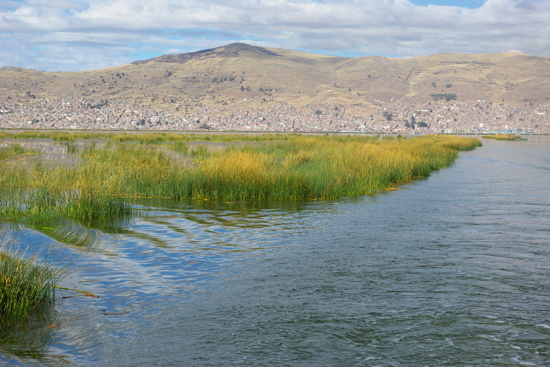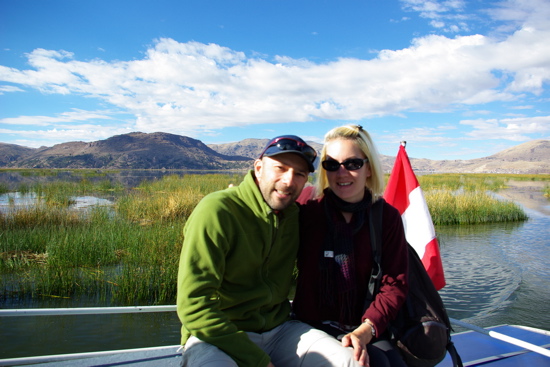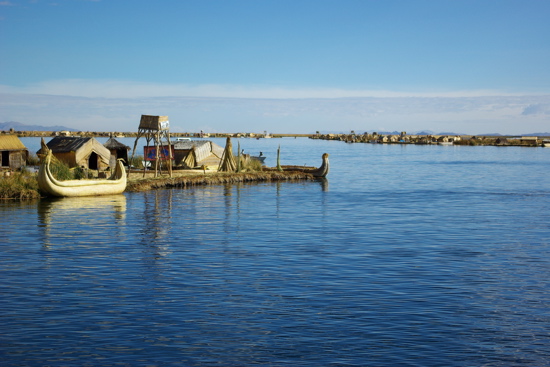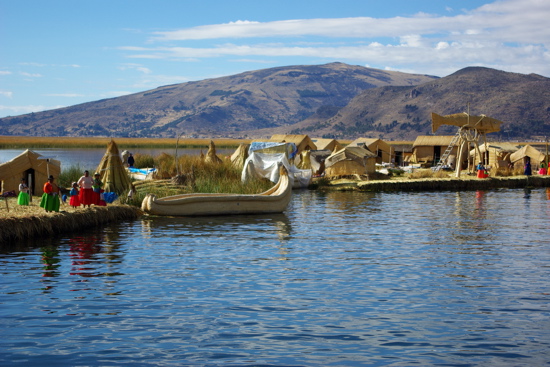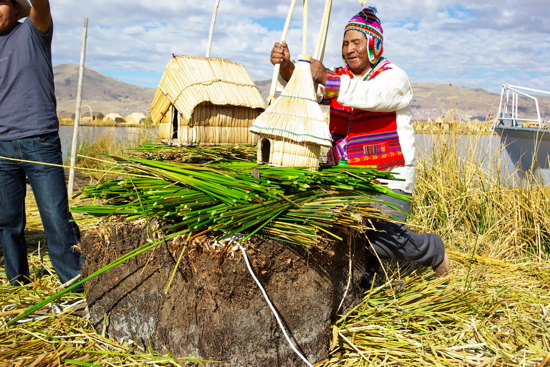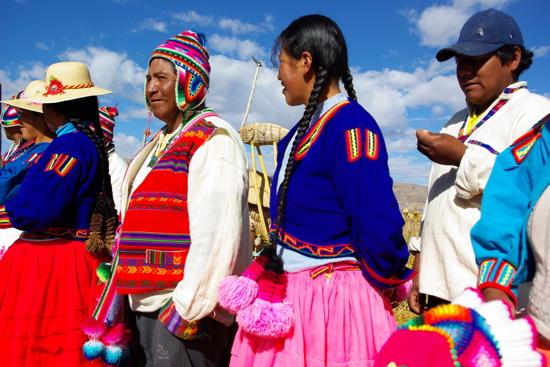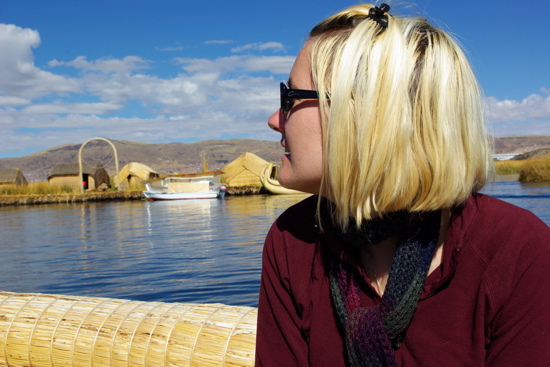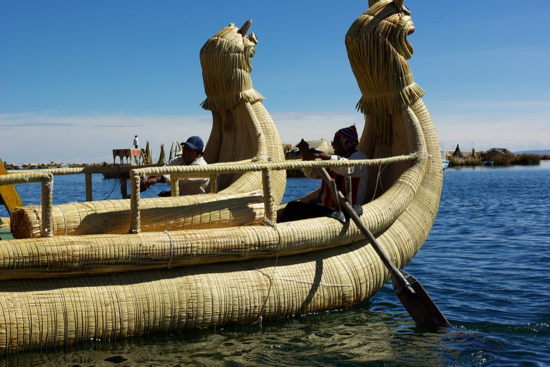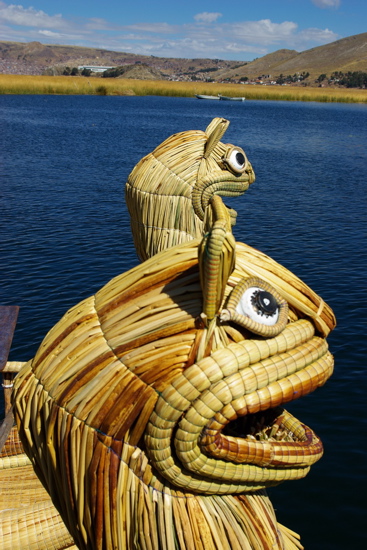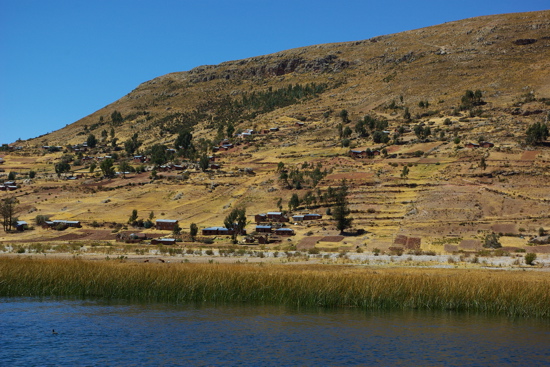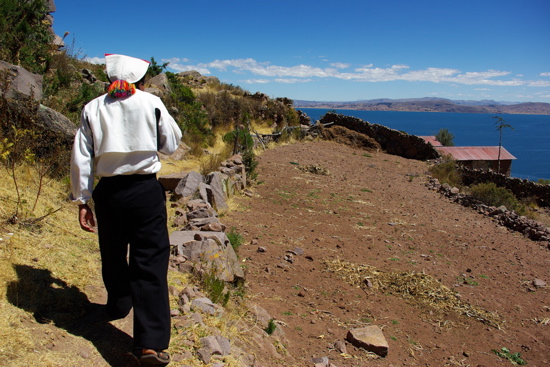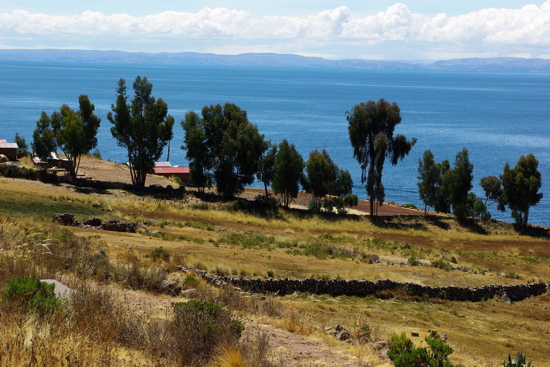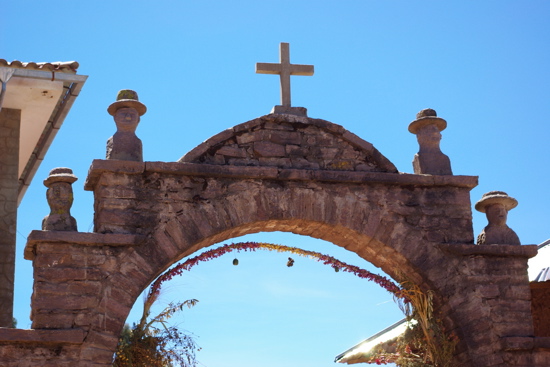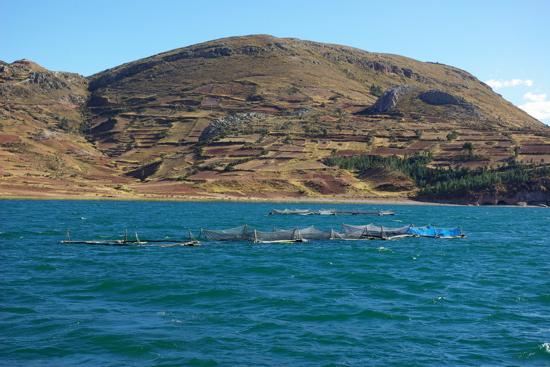In a grade-school geography lesson, I remember widespread giggling when learning that the highest navigable lake in the world was called “Lake Titicaca.” I mean, that’s the equivalent of Lake Boobycrap, Lake Hooterpoop, or Lake Knockerfeces. So it was well worth the entire trip to Peru to find out that “Titicaca” means “puma rock,” because the lake is vaguely shaped like a puma. (Hey, stop looking at my puma rocks!)
After journeying from Cusco to Puno, I could see Lake Titicaca for myself. It was impressively large, expanding well beyond sight onto the shores of Bolivia. Apparently, when you are in Peru they will tell you that 60% of the lake’s shoreline is in Peru. When you are in Bolivia they will tell you that 60% of the lake’s shoreline is in Bolivia and that America is the great Satan. Since we were in Peru, we were assured unequivocally that Lake Titicaca was mostly in Peru.
Our second day in Puno, we took a day trip on a speedboat with a group of around 20 other tourists — an equal mix of Anglophones and Spanish-speakers. Right off the shore of Puno, the boat speeded through a maze of totora reeds:
And we posed in the cool sunshine:
Not far off the coast we encountered the Uros Islands, which are a series of 4 dozen or so completely man-made islands upon which live the descendants of the Uros, a traditional people who I believe started as fishermen and started constructed semi-permanent islands out of the totora reeds. Nowadays, they continue to live on the man-made islands but make a brisk living in the tourist trade. We stopped at one islands and were welcomed warmly by about ten Uros, mostly female.
When we arrived at our designated island, we met the “president” of that island, who demonstrated how they constructed the islands out of the reeds with a model. The islands house about 5 families each, and when they need more room they will simply build another one. The islands last about 40 years.
The Uros offered to take us tourists on a short tour in their reed boats for 5 soles each (about $1.80).
When we were far from any islands, they stopped paddling and demanded their 5 soles. We paid them as they helped us re-board the tourist speedboat. From the Uros Islands, we journeyed about an hour to Taquile Island.
As we approached the island, the tour guide took great pains to explain some of the customs of the Taquileños, namely about how the single men wear their hats this way and the married men wear their hats that way. That’s apparently all anyone knows about Taquile’s inhabitants, aside from the fact that they make some of the finest textiles in all of Peru, so fine that the prices in the markets are fixed. No haggling!
Apparently there are some Incan ruins somewhere on Taquile, but we didn’t see them. We joined the long procession of tourists up a steep trail to the island’s main square, where we were given 30 minutes to browse the markets before lunch. Tourists were besieged by young children offering knotted bracelets for one sole (33 cents).
After a very pleasant lunch featuring local fish, potatoes, and soup, we returned to the speedboat for the 2-hour journey back to Puno. I curled up in my seat and reduced my sleep deficit by a few precious minutes, while Mr. P camped out on the boat’s roof deck and took in the sights of Lake Titicaca, including fish farming.
When we returned to Puno, we packed our bags, for it was our last night in Peru. But the following day would be action-packed before our return flight to America, so we were not too sad. We went out for our last dinner in Peru and really “went to town,” as they say. Yep, we blew a solid $40 USD on dinner — a kingly sum, by Peruvian standards.
